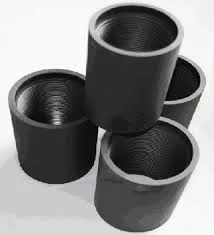- Afrikaans
- Albanian
- Amharic
- Arabic
- Armenian
- Azerbaijani
- Basque
- Belarusian
- Bengali
- Bosnian
- Bulgarian
- Catalan
- Cebuano
- Corsican
- Croatian
- Czech
- Danish
- Dutch
- English
- Esperanto
- Estonian
- Finnish
- French
- Frisian
- Galician
- Georgian
- German
- Greek
- Gujarati
- Haitian Creole
- hausa
- hawaiian
- Hebrew
- Hindi
- Miao
- Hungarian
- Icelandic
- igbo
- Indonesian
- irish
- Italian
- Japanese
- Javanese
- Kannada
- kazakh
- Khmer
- Rwandese
- Korean
- Kurdish
- Kyrgyz
- Lao
- Latin
- Latvian
- Lithuanian
- Luxembourgish
- Macedonian
- Malgashi
- Malay
- Malayalam
- Maltese
- Maori
- Marathi
- Mongolian
- Myanmar
- Nepali
- Norwegian
- Norwegian
- Occitan
- Pashto
- Persian
- Polish
- Portuguese
- Punjabi
- Romanian
- Russian
- Samoan
- Scottish Gaelic
- Serbian
- Sesotho
- Shona
- Sindhi
- Sinhala
- Slovak
- Slovenian
- Somali
- Spanish
- Sundanese
- Swahili
- Swedish
- Tagalog
- Tajik
- Tamil
- Tatar
- Telugu
- Thai
- Turkish
- Turkmen
- Ukrainian
- Urdu
- Uighur
- Uzbek
- Vietnamese
- Welsh
- Bantu
- Yiddish
- Yoruba
- Zulu
Understanding Casing Coupling Measurements and Specifications for Optimal Performance
Understanding Casing and Coupling Dimensions in Oil and Gas Operations
Casing and coupling dimensions play a crucial role in the oil and gas industry, particularly during the drilling and completion phases of well construction. These components ensure the structural integrity of the well, protect the environment, and facilitate the efficient extraction of hydrocarbons. This article will delve into the significance of casing and coupling dimensions, their specifications, and the standards governing these essential parts of the drilling process.
What is Casing?
Casing refers to the series of steel pipes that are installed in the borehole after drilling. It acts as a structural liner to stabilize the wellbore and prevent the collapse of loose geological formations. Casing is also used to isolate different pressure zones within the well and to protect freshwater aquifers from contamination by hydrocarbons or drilling fluids.
Casing comes in various sizes and grades, each designed for specific pressure and temperature conditions. The most common sizes for casing range from 4 ½ inches to 20 inches in diameter, but custom sizes can be manufactured to suit particular needs. The wall thickness and material grade of the casing determine its strength and durability. The American Petroleum Institute (API) provides guidelines through API Spec 5CT, which outlines the specifications for casing, including grades like J55, K55, and N80, each suitable for different well conditions.
Couplings The Connector of Casing
Couplings are the threaded components that connect two sections of casing together. They are essential for ensuring a secure, leak-proof connection between individual casing joints. The effectiveness of this connection is critical in maintaining the structural integrity of the wellbore under varying pressure and temperature conditions.
Couplings also come in different sizes and grades, similar to casing pipes. The dimensions of couplings must match precisely with the casing to ensure a proper fit. There are two main types of couplings standard couplings and premium couplings. Standard couplings are typically used in conventional drilling operations, while premium couplings offer enhanced strength and better resistance to corrosion and fatigue, making them suitable for more challenging conditions.
Importance of Accurate Dimensions
The accuracy of casing and coupling dimensions is vital for the overall success of drilling operations
. Incorrect dimensions can lead to various issues, includingcasing coupling dimensions

1. Wellbore Instability If the casing does not fit properly, it may fail to provide adequate support, leading to a potential collapse of the wellbore.
2. Fluid Migration Poorly matched couplings can create pathways for unwanted fluids to migrate between different zones of the well, risking contamination of groundwater.
3. Operational Delays and Costs Misalignment during casing operations can result in significant delays and increased costs due to the need to rework or replace improperly installed components.
4. Safety Hazards The integrity of the casing is crucial for ensuring safety during drilling operations. Any failure in this regard can pose risks to personnel and the environment.
Compliance and Industry Standards
To address these challenges, the industry adheres to strict standards and practices. The API sets forth specifications that manufacturers must comply with to ensure the quality and reliability of casing and couplings. These standards are regularly updated to reflect advancements in technology and best practices in drilling operations.
In addition to API standards, various regional regulations may apply depending on the geographical location of the drilling project. Companies must ensure compliance with local laws governing oil and gas extraction to avoid legal complications and potential fines.
Conclusion
Casing and coupling dimensions are integral to the successful execution of oil and gas operations. Understanding the specifications, applications, and implications of these components is crucial for engineers and technicians working in the field. As technology advances and drilling becomes more sophisticated, the importance of adhering to industry standards and maintaining precise dimensions cannot be overstated. Continuous training, strict compliance, and a commitment to safety will ensure the efficient and responsible extraction of the world's energy resources.
-
Well Casing Extension Couplings – Applications and InstallationNewsJun.06,2025
-
Types of Crossover Subs in Drilling & CompletionNewsJun.06,2025
-
Key Features of High-Quality Tubing Pup JointsNewsJun.06,2025
-
Installation and Maintenance Tips for Steel Couplings for PipeNewsJun.06,2025
-
How to Select the Right Pup Joint for Oil & Gas OperationsNewsJun.06,2025
-
Applications of Stainless Steel Pipe CouplingsNewsJun.06,2025







